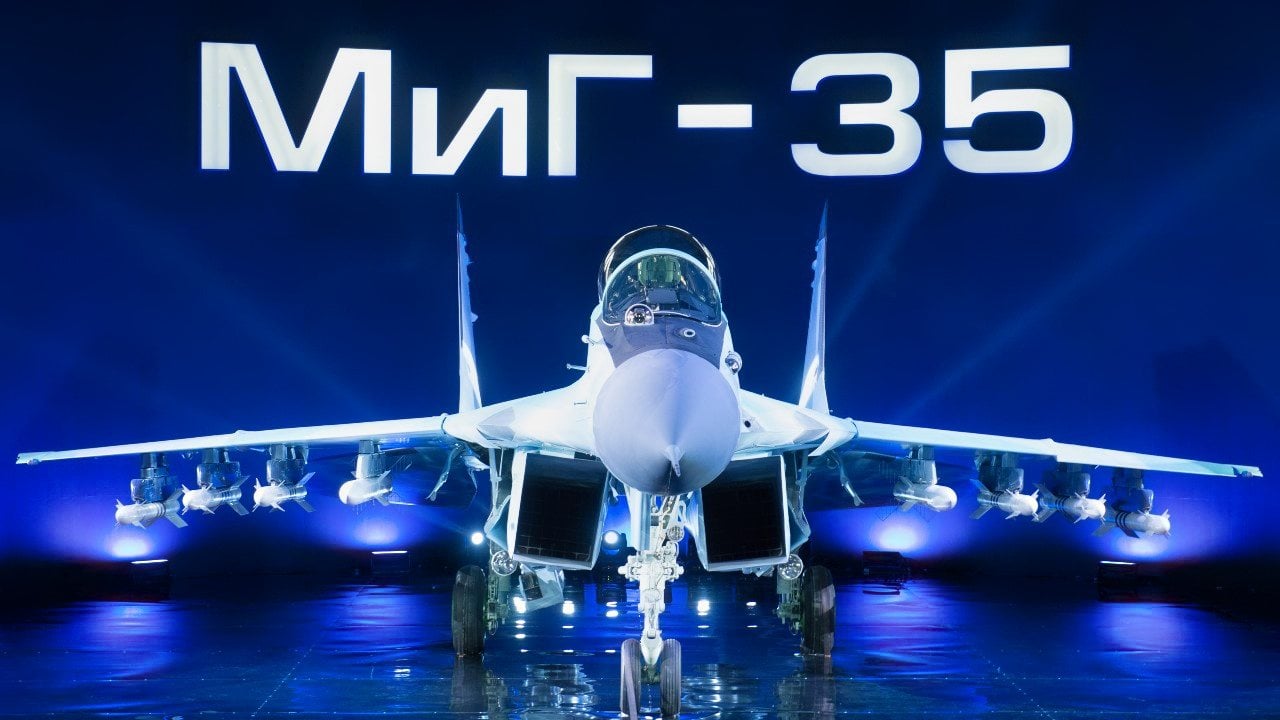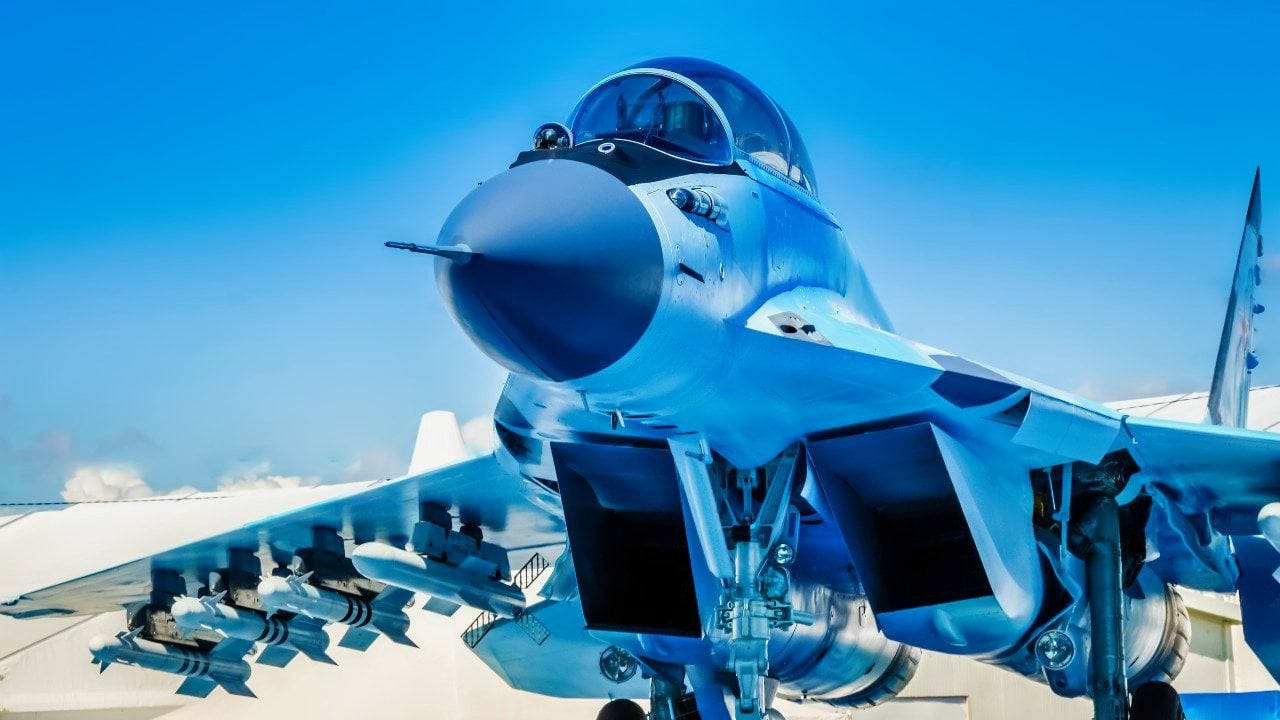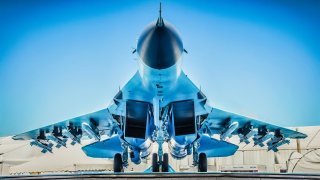Russia's MiG-35 Fighter Can Be Explained in 2 Words
The Russian MiG-35 “Fulcrum-F” was initially touted as a "4+++ generation" fighter, boasting advanced radar and optical systems for high-intensity conflict. However, the platform's underwhelming performance, high cost, and limited combat history have hindered its export success, with only Russia operating the model today.
Total Failure: The Russian MiG-35 “Fulcrum-F” was initially touted as a "4+++ generation" fighter, boasting advanced radar and optical systems for high-intensity conflict. However, the platform's underwhelming performance, high cost, and limited combat history have hindered its export success, with only Russia operating the model today.

Despite possessing improved RD-33MKB engines and AESA radar, the MiG-35 failed to secure buyers, falling short against global competitors like the F-16 and Rafale.
As Russia focuses on its prolonged conflict in Ukraine, limited resources and dwindling military assets further constrain MiG-35 production, making extensive deployment and export of the fighter unlikely.
Back in 2017, shortly after the MiG-35 debuted, the President of Russia’s Aircraft-Building Corporation, Yuri Slyusar, boasted that the new fighter platform would lead the way in the aerial arena.
The executive added, "The fighter aircraft has been specially designed for warfare amid increased intensity conflicts and highly dense air defense. The available high indicators have been achieved thanks to a set of onboard equipment mounted on the plane along with a new optical location system and radar signature reduced by several times.”
No matter what the Kremlin would like to purport, the true capabilities of the Mikoyan MiG-35 have proved to be underwhelming.
The origin story of the MiG-35
Designated by the North Atlantic Treaty Organization (NATO) as the Fulcrum-F, the MiG-35 is marketed by Russia as a “4+++ generation fighter” platform. Back in 2007, Moscow marketed the jet prototype at the Aero India air show in an attempt to acquire client states for the platform.

The Fulcrum-F was displayed alongside the Boeing F/A-18E/F Super Hornet, Eurofighter Typhoon, Dassault Rafale, General Dynamics F-16 Fighting Falcon and the Saab JAS 38 Gripen. However, by 2011 the MiG-35 was nixed from the contest due to failures concerning its radar and engines.
The MiG-35 is powered by a pair of RD-33MKB engines that generate 7% more power compared to the baseline model, providing a thrust of 9,000kgf. The Fulcrum-F was primarily derived from the MiG-29, however, its incorporation of an AESA radar manufactured by Mikoyan gives it an edge over its predecessor. In fact, the MiG-35 is the first Russian fighter to be equipped with active electronically scanned array radar.
As detailed by Air Force Technology, “The Zhuk-MA’s antenna consists of 160 modules, each with four receive-and-transmit modules. It is believed to offer a 160km (85nm) air target detection radius and 300km for surface ships. Like radar, OLS allows the MiG-35 to detect targets and aim weapon systems. But, unlike radar, OLS has no emissions, meaning it cannot be detected.”
In terms of armaments, the MiG-35 can carry a range of missiles, bombs and rockets with its nine hardpoints, including the Kh-31A anti-ship missiles, the Kh-31P anti-radar missiles, the Kh-29TE missiles and the KAB-500Kr TV-guided bombs. Additionally, the Fulcrum’s 30mm cannon can lug roughly 150 rounds of ammunition.

Is the MiG-35 Fulcrum-F a failure?
Perhaps the MiG-35’s hefty price tag and lack of combat experience has led to its shoddy export history. From India and Egypt to Argentina and Bangladesh, the Fulcrum-F has been difficult to export.
Today, only Moscow flies the MiG-35. Even if this platform was as formidable as the Kremlin would like to tout, Russia is in no financial position to produce enough of them to export. Since February 2022, Moscow has poured the majority of its resources into its ongoing invasion of Ukraine.
Russian forces have struggled to gain advances in the conflict considering it is running out of essential military equipment like main battle tanks, fifth-generation airframes and munitions. Considering this pace, Moscow won’t possess additional Fulcrum-F fighters for a while.
About the Author: Maya Carlin
Maya Carlin, National Security Writer with The National Interest, is an analyst with the Center for Security Policy and a former Anna Sobol Levy Fellow at IDC Herzliya in Israel. She has by-lines in many publications, including The National Interest, Jerusalem Post, and Times of Israel. You can follow her on Twitter: @MayaCarlin.
The main image is from Shutterstock. All others are Creative Commons.


